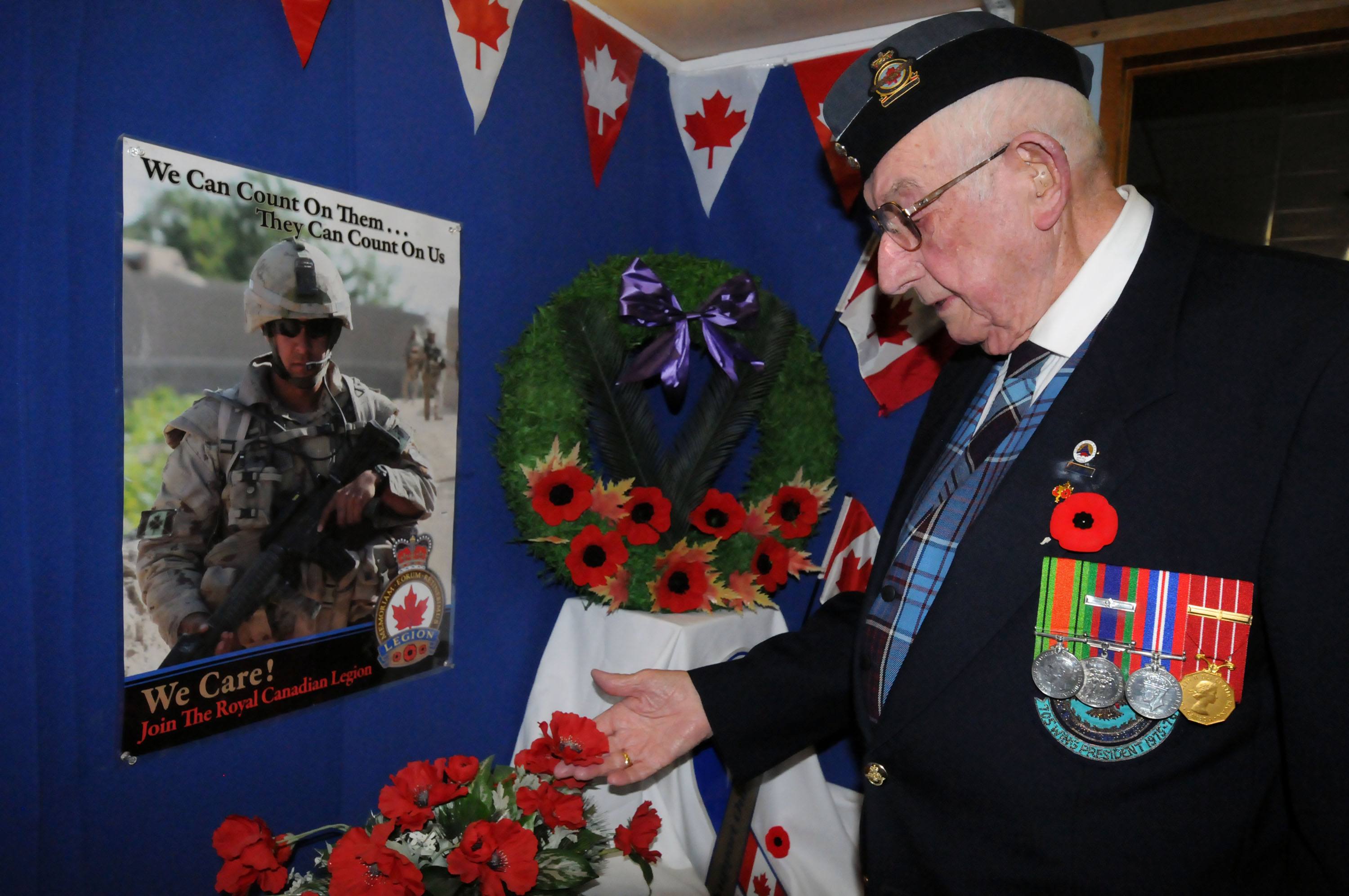As Remembrance Day approaches, thoughts turn to those who are currently serving their countries and of course to those who served in years past.
One of the most steadfast veterans in Red Deer is Master Warrant Officer Patrick Sisk, a 32-year RCAF serviceman and 65-year member of the Royal Canadian Legion.
Sisk was born in 1925, and grew up on a small farm in Paquetville, New Brunswick.
The oldest of 11 children, he learned how to fish lobsters, milk cows and hunt.
A significant change in direction came as he approached adulthood.
“The day I was 18, I walked into the recruiting unit and joined the air force.”
He enlisted on May 6th, 1943 with 15 other recruits from the Maritimes.
Sisk went for basic training in Lachine, Quebec. It was the first time he had been outside of New Brunswick.
“I was quite excited for basic training. We had the corporal instructors that were from the nearby Air Force. “We had to learn the rules and regulations for the Air Force. We had to read it over and we were questioned on different parts of it.”
After basic training, Sisk was posted to Moncton for three months to the service flying training school. He was then briefly moved along with his squadron to Weyburn, Saskatchewan.
Sisk was then posted back to Moncton where he worked in the equipment supply deploy. He held this position for a year until he was moved to Goose Bay, Newfoundland and Labrador because of ‘insubordination’ after refusing to walk the security dog.
“One of the corporals came down and said ‘You walk this dog’ and I didn’t think that was in the books, being a military person. I said no.”
He was then escorted to the guardroom and relieved of his duties and sent to Goose Bay.
“I was just talking too much,” says Sisk. He spent 13 months in Goose Bay, which was a very lonely period in his life.
“On VE Day, they had a riot in Halifax. It was required of all the Air Force police to get in an aircraft and fly to Halifax to the riot, but they cancelled it.”
Sisk was left out of the action as he was posted in Goose Bay. At the base, everyone was on constant alert for German prisoners that were dropped off by submarines.
“A boat sunk in the entrance to Lake Melville by the German submarines so we had to watch.” Sisk was then posted to Dartmouth, Nova Scotia.
“They were building up for the attack on Japan, so when they dropped the two bombs on Hiroshima and Nagasaki, they released three quarters of the men in service and I was one of them.”
Sisk was discharged on Dec. 27th, 1945. He went home for six months, but he didn’t want to farm or fish. “I never felt comfortable in a boat, so I re-enlisted in September of 1946.”
He was posted to Dartmouth until late 1946. He then received word that he was to be posted to Edmonton. “Oh that was the answer to my prayer. I could see Canada.”
In January of 1947 Sisk was on a train heading to Edmonton.
During his posting in Edmonton, Sisk met his first wife.
“My wife worked as a waitress in the officer’s mess. She was just about six feet tall.”
At the time, Sisk was driving the bus for employee transport to the base. “I saw this girl get on and I said to myself ‘That is going to be my wife’.”
He was then temporarily posted to Churchill, Manitoba.
“I had a month’s leave, and I got on the train and proposed to her, and we were married on the 11th of October 1947.”
Sisk was posted back in Edmonton where he stayed for six years. He took a vehicle mechanics course and learned how to operate a bulldozer and crane.
Over the next 10 years, he was posted to several locations in Eastern Canada, including one where he was a heavy equipment instructor at a tech school in Ontario.
Eventually he was moved to North Bay where he spent seven years.
“It was the best posting I ever had.”
Sisk eventually made his way back to Alberta, where he was again posted in Edmonton with the Airborne Regiment.
“Being too old to jump, I was a ground crew. I was a safety supervisor for the regiment.”
Sisk has four children. During life in the service, his family had to adjust to new places to call home every couple of years.
“When you are in the service, family meant a lot,” says Sisk, adding that the Air Force is like a large family.
“You have to help one another, which is a blessing really because it’s very lonesome,” he says. “In my wife’s case, we are supposed to pick up our family and go almost all the way across Canada to live in a different environment together.”
Sisk now resides in Red Deer and is a lifetime member of the Air force Association.



